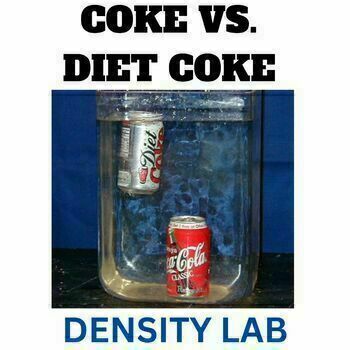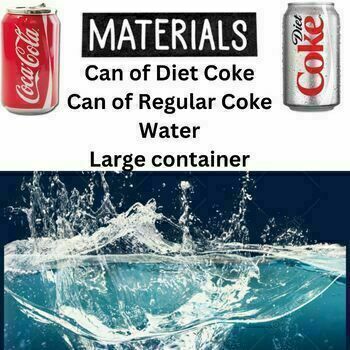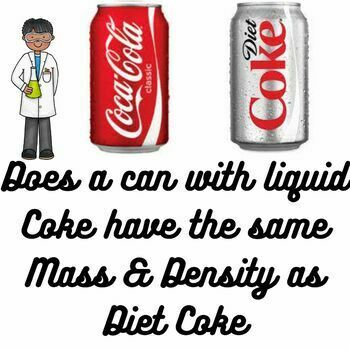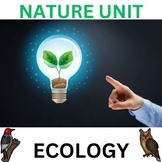Density Lab Coke vs. Diet Coke Activity Middle School Science
- Word Document File
Also included in
- Fun hands-on labs for your students to enjoy learning about densityDo you need resources to introduce mass, volume, and density?Look no further. Calculate density, mass, and volume with these fun labs. Please feel free to ask any questions about the lessons.*I have taught this concept for 20 yearsPrice $14.17Original Price $15.74Save $1.57
- Explore nature with your campers/students this year You will be able to use this bundle for1. Fun outside activities4. Homeschooling Your students will be talking about this for weeks!Price $60.67Original Price $86.67Save $26.00
Description
Here is a terrific no-prep lab to teach your Middle School Students the concept of Density. The lesson is printable and can also be used for distance learners
Please see Preview and feel free to ask any questions!
Materials
1 Can of Coke
1 Can of Diet Coke
Large Container of Water
In this guided lab students explore the question "Which of your favorite sodas will sink, and which carbonated beverages will swim? It's the density at its finest!" We use coca cola, and diet coca cola in this lab that is NGSS aligned to teach students about density, molecular properties, cause and effect, and the scientific method.
Students will perform math to learn how density affects an object to float.
Fully editable document
Clip art by Kate Hadfield
Classroom Tested
GSS
MS-PS1-4
Develop a model that predicts and describes changes in particle motion, temperature, and state of a pure substance when thermal energy is added or removed. Emphasis is on qualitative molecular-level models of solids, liquids, and gases to show that adding or removing thermal energy increases or decreases the kinetic energy of the particles until a change of state occurs. Examples of models could include drawings and diagrams. Examples of particles could include molecules or inert atoms. Examples of pure substances could include water, carbon dioxide, and helium.
NGSS
MS-PS1-3
Gather and make sense of information to describe that synthetic materials come from natural resources and impact society. Emphasis is on natural resources that undergo a chemical process to form synthetic material. Examples of new materials could include new medicine, foods, and alternative fuels. Assessment is limited to qualitative information.
NGSS
MS-PS1-1
Develop models to describe the atomic composition of simple molecules and extended structures. Emphasis is on developing models of molecules that vary in complexity. Examples of simple molecules could include ammonia and methanol. Examples of extended structures could include sodium chloride or diamonds. Examples of molecular-level models could include drawings, 3D ball and stick structures, or computer representations showing different molecules with different types of atoms. Assessment does not include valence electrons and bonding energy, discussing the ionic nature of subunits of complex structures, or a complete depiction of all individual atoms in a complex molecule or extended structure.







